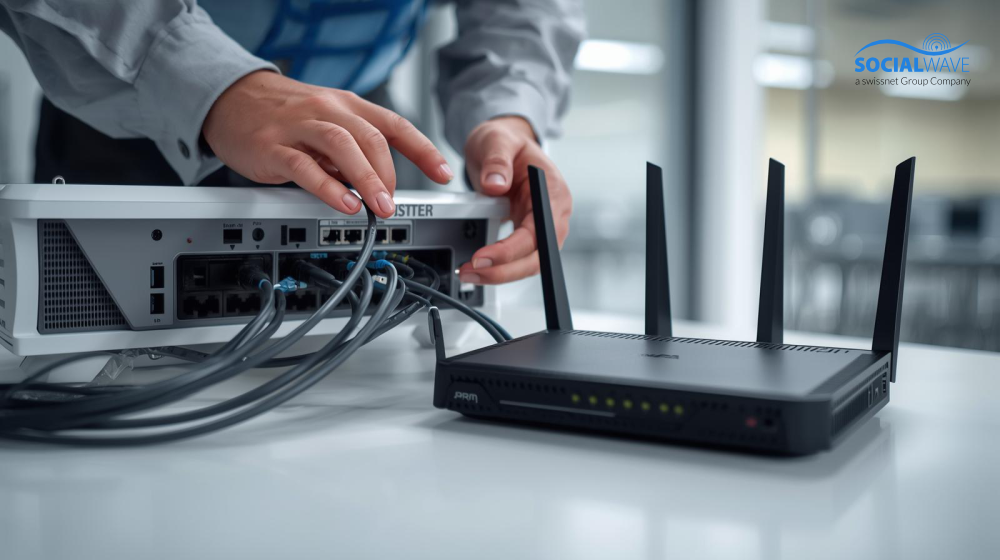Multi-sensory marketing

Imagine the following situation: You walk into a café and are greeted by the friendly ringing of the doorbell. The machines' grinders whir while music plays discreetly in the background. The aroma of freshly brewed coffee is in the air. As you walk further into the store, you notice the coffee beans being displayed behind the counter. An artistic lettering tells the story of their origin. When you can't decide right away, an employee explains the different characteristics of the varieties and hands you a bean at a time. You make your choice and receive your drink shortly after. Feel the warmth of the mug in your hands and enjoy taking your first sip. From now on, whenever you think of coffee, this scene appears in front of your mind — just as the café operator intended. In the following article, you will find out what role your senses play and how you can use them for your own business.
What is multi-sensory marketing?
The term “multi-sensory” consists of the parts “multi” (many) and “sensus” (sense) and describes the interaction of several senses. The term “marketing”, which comes from business, describes all activities of a company that are intended to promote sales, such as advertising, market monitoring and customer service. Multi-sensory marketing is therefore a method of increasing sales by appealing to multiple senses.
The five senses of man
Depending on the source, up to 13 senses are spoken in science. In addition to the classic five senses, there would be, for example, the sense of balance and senses for the perception of temperature and time. As part of our contribution, we will limit ourselves to the 5 basic senses for now Seeing, hearing, Smell, tasting and Feeling. Different amounts of information reach the brain via the sensory organs, with the sense of sight sending by far the most data.
Amount of information transmitted per sense
The potential of multi-sensory marketing
If several senses are addressed at once during an event, we experience it up to ten times more strongly. It's also proven that we remember them better. According to this, the period of time in which we remember an event is doubled if four to five senses are addressed simultaneously during the event. Companies use this knowledge by consciously creating multi-sensory experiences for their customers. This creates stronger associations with consumers' emotions and memories. Even the sound of a bell when you enter a shop becomes, consciously or unconsciously, part of the customer experience. It is particularly interesting that brand loyalty also increases when multiple senses are addressed. In other words, multi-sensory marketing makes the difference between a brand that you remember and a brand that is impossible to forget again.
sense of sight
| OpticsThe sense of sight provides over 80% of the information of all sensory impressions. The eyes can process around 35,000 impressions per hour. It is therefore no wonder that the sense of sight is essential for the purchase decision. A subjectively appealing product, a tastefully furnished shop — even smiling employees fall into this category. Vision influences people more than any other sense and sometimes even changes the perception of other senses. In a test by C.N. DuBose (1980), participants were asked to recognize drinks with different flavors. If the color was right, the participants correctly identified the taste. If the color did not match the flavor, only 30 percent of the test subjects were able to correctly recognize a cherry flavor, whereas 40% thought it was lemon.
Sense of hearing
| AcousticsHearing is the fastest of our senses. Humans can tell apart up to 7,000 different pitches via their ears and some people can determine the direction from which a short sound signal is coming with an accuracy of up to two degrees. Noises, sounds and music arouse emotions. That is why a well-considered audio concept is an important part of multi-sensory marketing. Music in shops, waiting rooms or foyers, which is adapted to the furnishing style, the time of day and the brand identity, has a major influence on the conscious and unconscious brand perception of guests and customers. Research shows that 96 percent of potential customers better remember a brand whose music matches their identity. The right sound in a retail store can encourage longer visits, increase sales and improve employee performance. In the same way, product features can be underlined by sound. For example with the BMW M5. To make the vehicle look as sporty as possible, the loudspeakers in the vehicle interior amplify the engine noise, even when the audio system is switched off. The absence of noise can also shape your brand. Quiet hotel rooms with quiet refrigerators and air conditioners as well as soundproof windows and well-insulated walls are a clear sign of quality.
sense of smell
| OlfactorThe sense of smell causes the strongest reactions in humans and is therefore one of the most important and most addressed senses in marketing. In themselves, odors are only combined chemical compounds. They only gain in importance in connection with memories and emotions. This is how many people claim to like the smell of coffee without drinking coffee themselves. This is because these people most likely associate pleasant situations with the scent. Abercrombie & Fitch provides a prominent example of effective scent marketing. Shops and products were given the scent of the specially created perfume “Fierce”. The young target group associated the smell not only with the company, but also with the sex appeal and rebellious appearance of the brand. Fierce thus became the scent of an entire generation. Smells also have an influence on our perception of cleanliness, which is extremely important in hotels and medical practices. This can also be observed with cleaning agents. Scented cleaners seem to achieve their goal subjectively better than their odorless opponents — even with objectively the same results.
Sense of touch
| HaptikThe use of the sense of touch in marketing is illustrated by the example of furniture stores. Many consumers still prefer to visit the partly overcrowded furniture stores than conveniently order the products online. This is because consumers want to test the furniture live, i.e. feel it. Apple's success is also due, among other things, to the fact that visitors to retail stores can touch the products on display. This significantly influences the shopping experience and both the products and the brand itself are remembered for longer. Apple also pays attention to quality in its packaging. The box in which the devices are delivered feels velvety and sturdy in comparison — a conscious decision with regard to multi-sensory marketing that shapes the brand image desired by Apple from the very first second. Customers appreciate the opportunity to be able to touch a product, but in the end, it is more important how the product feels. Bang & Olufsen, manufacturer of high-quality TV sets, installed a metal plate in its remote controls. The sole purpose of the plate was to make the remote control heavier, as that suggests quality and durability.
Sense of taste
| GustatorikThe perception of taste is an exception, because it is an interplay of different senses rather than a single, isolated sense. It was already clear in the section on the sense of sight: The eye eats too! The situation is similar when it comes to noises. Whether chips are “crispy” is always associated with acoustic feedback in addition to mouthfeel. The hissing of a can of lemonade and the resulting smell allow conclusions to be drawn about the taste. We don't have to bite into it first to be able to imagine what a crunchy, firm or a mealy soft apple tastes like. Taste can also be useful for industries that do not focus on food. In an experiment, marketing scientists from Zeppelin University Friedrichshafen came to the conclusion that predetermined or higher prices after taking sugar water are much more likely to be accepted as fair. Sweets therefore change our perception of prices. A good cup of coffee during a customer meeting also has an influence on the image that your customers have of your company and the length of time they spend in your shop. Ikea also knew this and introduced restaurants within the branches. A third of visitors now visit the Swedish furniture giant just for the food.
Combining sensory impressions
Multi-sensory marketing is most successful when as many senses as possible are addressed simultaneously. The company Dunkin Donuts is a prime example of this. Diffusers were installed on a bus route in South Korea, which released fragrances into the air on command. Every time the Dunkin Donuts jingle on this bus, it smelled of freshly brewed coffee at the same time. Passengers then got off the bus, they saw a Dunkin Donuts branch with corresponding advertising signs at several stations. As a result of this multi-sensory marketing campaign, the turnover of stores located close to the bus route rose by a whopping 29% and the length of stay increased by 16%.
conclusion
40 percent of all Fortune 500 companies have a strategy for using multi-sensory marketing, and with good reason. It can improve customer loyalty, increase revenue, and help companies stand out from the competition. Many companies have not yet paid attention to which senses of their customers appeal to them and in what way. Use this to your advantage! Develop a strategy and use the massive potential of multi-sensory marketing! With our WLAN marketing package, your customers/patients/guests advertise for you, are happy and recommend you to others.








.svg)

.svg)
.svg)



